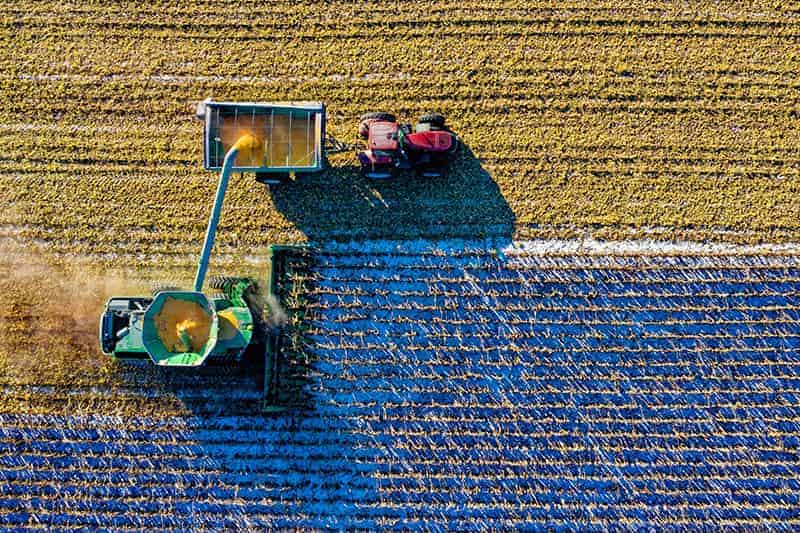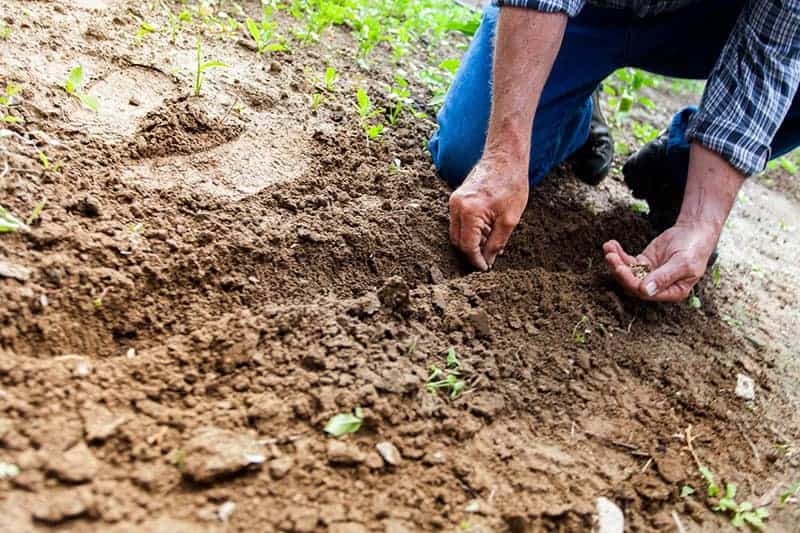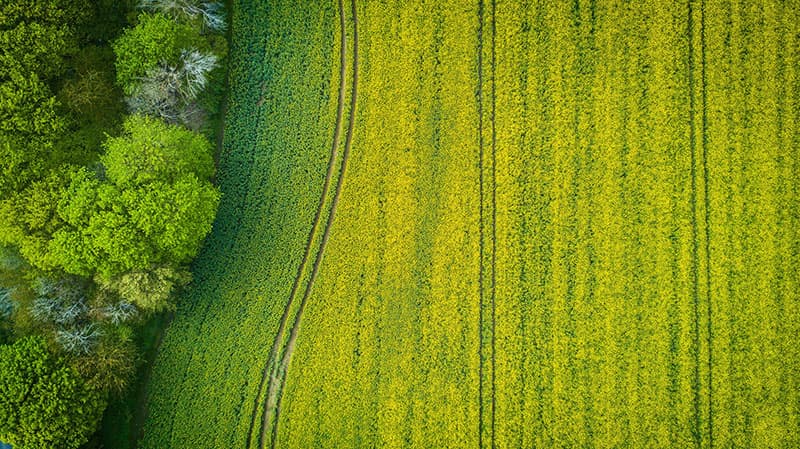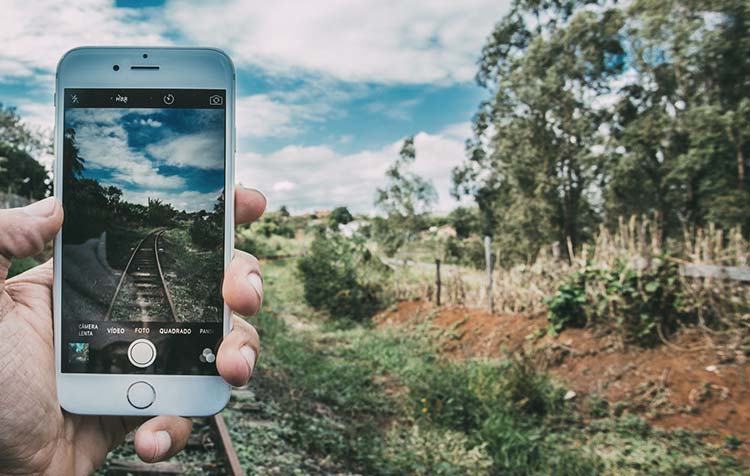What is actually understood by Soil Erosion? It is not only farmers who are asking themselves this question today. A wide variety of causes are eroding fertile soil in the fields, leading to increased crop failures and threatening our food security. The problem is tangibly described: once the fertile, top layer is lost, it never comes back. Healthy soil is the basis of life for plants, animals and humans. Soil erosion is therefore one of the most serious biggest environmental problems of our time.
In this article, I would like to give you everything you need to know about it. From the definition, statistics, causes and consequences, to sensible solutions - both for your everyday life, as well as for farmers and politics.
What is soil erosion?
Basically, this refers to the removal of soil components by runoff water, wind, snowmelt, and soil displacement, with humans accounting for the largest share of global soil erosion.
The concept of Erosion is to be distinguished from this in that it basically only refers to the natural, i.e. not man-made, erosion of the rocks on the earth's surface.
The concept of Soil degradation is a consequence of soil erosion and means the permanent loss or change of soil structure.₁.
Soil erosion due to wind
So-called wind erosion describes the displacement of soil material of the soil surface by the wind that occurs at wind speeds of more than 5-6 m/s. Larger soil particles tend to be carried only over short distances, while small particles can be carried significantly further.₂
Areas that are very susceptible to wind erosion are those that are open to the wind, dry, and very flat with a high percentage of fine sand.
Soil erosion by water
Raindrops tear small soil particles out of the earth and use them to clog the cavities in the soil, causing it to silting up. The water can then inevitably only run off at the surface, taking fertile arable soil with it. These linear erosion forms₃ then form on the field in the sequence mentioned above
- Grooves: Initially, the water runs off in grooves about two to ten centimeters in size.
- Gutters: As a result, gullies of about 10-40 centimeters are formed.
- Trenches: If the cause of water erosion persists, it can even create entire trenches that measure more than 40 centimeters.
Especially on slopes, water erosion can assume extreme proportions. In addition, so-called areal erosion can also occur due to impacting raindrops, which can also loosen particles from the soil.
Facts, Figures & Statistics
Since the environmental problem of soil erosion is very difficult to grasp or to see at first glance, I would like to give you some statistics about it:
- A quarter of all agricultural land in Germany is at high risk of erosion.₄
- On highly vulnerable areas, the annual average soil loss due to water erosion was more than five tons per hectare. According to the Federal Environment Agency, this is a soil loss of more than 0.5 millimeters per year.₅
- 24 billion tons of fertile soil were lost in 2011 alone.₆
- Erosion costs each person 60 euros per year.₇ In total, that's about 420 billion euros worldwide.₈
- In 2050, only a quarter of the arable land that was usable in 1960 will be available per inhabitant of the Earth.₉
- Globally, the main concern is the 2.5 billion people who live in drylands - that's about 40% of the land surface. 70% of this is at risk of turning into desert.₁₀
Causes of soil erosion

But how do we actually lose several billion tons of fertile soil every year? The answer to this question is as complex as the soil itself. Nevertheless, there are some basic causes, which I would like to explain to you briefly below.
Monoculture agriculture
From the farmer's point of view, of course, there are some advantages to growing the same type of crop on one's own arable land for years - for example, specialist knowledge in the one area is sufficient. And there is no pressure to finance many different machines for the corresponding crop type.
However, in order to guarantee high yields on the basis of healthy soil in the long term, industrial, monocultural agriculture is not a good idea. Because well-considered crop rotations are the basis for preventing soil erosion and Nutrient losses of the soils. Those who have to produce faster also increasingly use artificial fertilizers and pesticides, which poison and overexploit our soils and also the groundwater.
Also the Overgrazing plays a major role in soil erosion. This is the case, for example, when a meadow is stressed more than it can recover. The larger the herds in the meadows, the greater the load on the soil from browsing or trampling.
Other environmental problems
Soil erosion is also a consequence of other ecological problems of our time, which we humans have created ourselves.
The Deforestation for example, has a very decisive part to play in the loss of fertile soils. On the one hand, because the protective canopies are missing, so that rainfall can more easily wash away the nutrient-rich humus layer. Secondly, because the massive trees can no longer protect against wind erosion. The roots of the trees also have important tasks in the soil itself and hold the soil together. But the form of deforestation is also crucial. Modern methods unfortunately dig up the entire soil, whereas, for example, the soil can be left as untouched as possible with pack horses.
However, a decisive cause of global soil degradation is primarily the Climate Change. Storms, floods and droughts have increased in recent decades. As a result, soil erosion by wind and water is increasing - and the drought is also causing increased water consumption, which is increasing the global Water Shortage tightened.
Consumption of industrial mass products
When Food, clothing or other goods have to be produced ever faster and also be available at affordable prices, our soils naturally do not remain unscathed. For example, because valuable raw materials lie dormant in them, which, for example, the rare earths used in the production of smartphones are needed. In particular, the use of pesticides to speed up food production or the runoff of chemicals from clothing production poison water and soil.
Soil sealing
The more soil we seal for our cities and roads, the more fertile land we permanently lose. This is because soil sealing generally leads to a Total loss of soil functionswhich is permanent or reversible only by extremely high effort.₁₁
Consequences of soil erosion

The basic consequence of soil erosion is the loss of fertile soil - but the effects are so varied that it is impossible to mention all of them. Nevertheless, I would like to show you some crucial consequences to illustrate how serious the situation really is with this unfortunately little discussed environmental problem.
Climate Change
Our soils build up or decompose organic substances. They store the CO2that we blow into the atmosphere through our way of life. The trees that grow in the ground are also real carbon reservoirs - yet we are cutting them down, putting the CO2 free and deprive soils of the most important protection against erosion. A healthy soil is a real weapon in the fight against the Climate Change.
Harvest losses
The loss of fertile soil leads to extreme crop losses. When arable land is so overused that plants can no longer grow there, it is hardly surprising. Fertility decreases and soil salinization increases. As a result, of course, the benefits of arable land diminish - especially compared to the benefits it could provide if it were managed sustainably and ecologically.
Slope slide
Ranker and regosol are low-density soils that occur primarily in high and low mountain ranges. This thinner, uppermost soil layer slides off more easily due to wind or water. In combination with the various causes of soil erosion, landslides are therefore occurring more and more frequently, in some cases endangering lives.
Increasing number of hungry people
The World Hunger is one of the biggest social problems of our time - and is being increasingly exacerbated by global soil erosion. On the one hand, farmers lose large parts of their income and can no longer feed their families. On the other hand, there is a lack of food, so that more people have to go hungry. It is estimated that around 33.7 million tons of food are lost every year due to the loss of fertile soil.₁₂ The lack of food is also one of the main reasons for hunger, poverty and flight - so healthy soil brings with it much more potential for improvement than one might initially assume.
What to do against soil erosion?

Since the environmental problem of soil erosion has many different causes, it can only be solved with different approaches. Agriculture, consumers, business and politics can only work together to find a long-term solution.
What farmers can do
Those who farm themselves have a particularly large number of options for limiting soil erosion in order to significantly increase their own yields at the same time. Here are a few examples:
- Cover soil effectively (e.g. undersowing and catch crops - or leave crop residues in the field).
- Protect & preserve soil (e.g. do not plow, plants with branched roots).
- Maintain or build windbreaks with trees, hedges & earthen berms
- Varied crop rotation
- Height-parallel plowing of the field (the rainwater can then run down the slope with difficulty and carry away soil particles).
- Wide tires of the agricultural machinery
Basically, it is important to reduce the pressure on the soil and thus increase its compaction.
What consumers can do
To get to the root of soil erosion and counteract industrial agriculture, deforestation and, most importantly, climate change, there are many different approaches you can take in your everyday life. Here are some ideas to help you move from being part of the problem to being part of the solution:
- Organic, Seasonal & Regional Shopping: Food from organic farming are produced in a soil-friendly way - i.e. without the use of toxic chemicals and with well thought-out, soil-protecting concepts. By counting on natural foods and Buying regionally, you reduce the monocultural, industrial agriculture that robs our soils of health.
- Abstain from meat: By reducing or eliminating your meat consumption, you stop deforestation to create new farm and pasture land and lay the foundation for soil conservation. Less animal feed needs to be produced, so you can enjoy more of the plant foods yourself. You can learn more about this, for example, in the article about the Relationship between nutrition and the environment.
- Solidarity Agriculture: With the so-called SoLaWi, you financially support an organic farmer to be able to produce his food sustainably. In return, you receive the same food.
Basically, you can contribute to the solution of all ecological and social problems of our time by making everyday life more environmentally conscious. Please have a look at the article with the best Tips for sustainable living inside.
What politics must do
In addition to farmers and consumers, it is primarily the task of politics and business to combat the loss of soil. The following political measures can help to solve the problem:
- Effective measures against illegal logging
- Increased subsidies for organic farming
- Intensification of climate protection measures (e.g. promotion of rail transport and expansion of renewable energies)
Do you have any other ideas that could contribute to the solution? Then feel free to write a comment below this article.
Can soil erosion be stopped?
As the video impressively depicts, the arable land available to each inhabitant of the Earth is expected to be cut in half by 2050. But we all have the chance to correct our mistakes and save the soils on which life on this earth depends. Efficiency is the key word here - because the better we use the soil, irrigate fields, align protective barriers, the greater the ecological and also economic return. Above all, as a consumer, you can make a decisive contribution to ensuring that this is done.
Do you have any suggestions or questions about the environmental problem of soil erosion? Then feel free to leave me a comment below this post. Also feel free to share the article to help educate more people.
Best regards,

PS.: Have a look at our Environmental protection blog stop by to learn even more about environmental problems and their solutions. Learn, for example, what Fast Fashion and what simple means you can use in everyday life to sustainable with fashion handle.
References:
₁ https://www.spektrum.de/lexikon/geographie/bodendegradation/1110
₂ https://www.umwelt.sachsen.de/umwelt/boden/12340.htm
₃,₅ https://www.umweltbundesamt.de/themen/boden-landwirtschaft/bodenbelastungen/erosion
₄ https://www.welt.de/wissenschaft/umwelt/article150306740/Deutschlands-Boden-verschwindet.html
₆ https://www.youtube.com/watch?time_continue=125&v=S5ZVpQS0D9M
₇ https://www.giz.de/fachexpertise/html/60098.html))
₈ https://www.youtube.com/watch?time_continue=125&v=S5ZVpQS0D9M
₉ https://www.scientificamerican.com/article/only-60-years-of-farming-left-if-soil-degradation-continues
₁₀ https://www.giz.de/fachexpertise/html/60098.html
₁₁ https://umwelt.hessen.de/umwelt-natur/boden/vorsorgender-bodenschutz/bedeutung-gefaehrdung-und-schutz-des-bodens
₁₂ https://www.forbes.com/sites/linhanhcat/2019/05/21/soil-erosion-washes-away-8-billion/#c2318945b6c3





